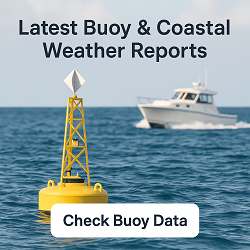Eagle Bend, MN Weather Forecast and Current Conditions (56446)
Current Conditions From Nearby Station

Feels Like 69°F
at
Current Conditions From Nearby Station

Feels Like 69°F
at
Point Forecast at a Glance







This Date in Weather History
1969 - Denver, CO, received 9.6 inches of snow. October of that year proved to be the coldest and snowiest of record for Denver, with a total snowfall for the month of 31.2 inches.
More on this and other weather history
Eagle Bend 7 Day Weather Forecast Details
Saturday Oct 4

Day: Mostly sunny, with a high near 88. South wind 15 to 20 mph, with gusts as high as 35 mph.

Night: Partly cloudy. Low around 69, with temperatures rising to around 72 overnight. South wind 15 to 25 mph, with gusts as high as 40 mph.
Sunday Oct 5

Day: A chance of rain showers after 7am. Mostly sunny. High near 77, with temperatures falling to around 64 in the afternoon. Southwest wind around 25 mph, with gusts as high as 40 mph.

Night: A chance of rain showers before 7pm. Partly cloudy, with a low around 41. Northwest wind 5 to 20 mph, with gusts as high as 35 mph.
Monday Oct 6

Day: Mostly sunny, with a high near 59. West northwest wind 5 to 10 mph.

Night: Mostly clear, with a low around 40. West wind around 5 mph.
Tuesday Oct 7

Day: Sunny, with a high near 60. West northwest wind 5 to 10 mph.

Night: Clear, with a low around 37. Northeast wind 0 to 5 mph.
Wednesday Oct 8

Day: Areas of frost before 7am. Sunny, with a high near 66. South southeast wind 0 to 10 mph.

Night: Mostly clear, with a low around 46. South wind around 10 mph.
Thursday Oct 9

Day: A slight chance of rain showers between 7am and 1pm. Mostly sunny, with a high near 66. South wind 10 to 15 mph. Chance of precipitation is 20%.

Night: Partly cloudy, with a low around 47. Southwest wind 5 to 10 mph.
Friday Oct 10

Day: Mostly sunny, with a high near 66. Northwest wind 5 to 10 mph.
Sun & Moon Monthly
Sunrise 7:23 AM
Sunset 6:56 PM
Last Light 7:25 PM
Moonset 4:09 AM

Contiguous United States Extremes
Fri's High Temperature
103 at Gila Bend, AZ and 3 Miles East Southeast Of Casa Grande, AZ
Fri's Low Temperature
23 at Angel Fire, NM
Weather Folklore
An evening gray, and a morning red, makes the shepherd hang his head.
Current subscribers - login to your ClearSky account
About Eagle Bend, Minnesota
Eagle Bend is a city in Todd County, Minnesota, United States. The population was 535 at the 2010 census. By the 2020 Census the population had increased slightly to 546.
Content from Wikipedia, licensed under CC BY-SA 3.0.
How We Provide Better Local Weather
Current conditions: We use the nearest available station to your location - including professional MESONET/MADIS and local weather stations - often miles closer than regional airports.
Forecasts: National Weather Service point forecasts predict for your specific area, not broad regional zones, making them far more relevant to your location.

